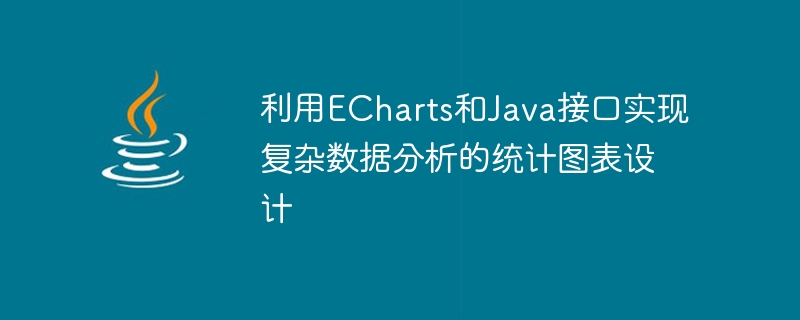

Using ECharts and Java interfaces to implement statistical chart design for complex data analysis
With the development of big data technology, data analysis has become an important part of science, business and politics. An indispensable tool in the field. When conducting data analysis, charts are an intuitive, easy-to-understand, and concise way of presentation. ECharts is an excellent JavaScript chart library that provides rich and flexible chart types and interactive functions to meet various data visualization needs. This article will introduce how to use ECharts and Java interfaces to implement statistical chart design for complex data analysis.
1. Introduction to ECharts
ECharts is an open source JavaScript chart library developed by Baidu. It has the following characteristics:
2. Introduction to Java interface
Java is a high-level programming language with good object-oriented and portability characteristics. In data analysis, we usually need to read data from a database or file, process and analyze it. Therefore, Java interfaces are necessary tools for data analysis.
In this article, we use the RESTful style API interface provided by the Spring Boot framework to transmit data through the HTTP protocol. The core part of the interface is to use Java's native HttpClient library to send HTTP requests and receive server responses.
3. Implementation steps
First you need to download the ECharts library and Java HttpClient library and introduce them into the project. We can introduce ECharts into the project in the following ways:
Next, we create a Java class to handle HTTP requests and responses. Here we take the Spring Boot framework as an example to create a RestController class and implement an HTTP GET method to return data.
@RestController
public class ChartController {
@Autowired
private ChartService chartService;
@GetMapping("/chart")
public ChartData getChartData() {
return chartService.getChartData();
}}
Among them, ChartService is a Java class required to read data and convert it to ECharts data format. ChartData is a POJO class used to encapsulate chart data.
In the ChartService class, we need to implement the getChartData() method, which is used to read data and convert it into the data format required by ECharts. In this example, we use a Map
@Service
public class ChartService {
public ChartData getChartData() {
Map<String, Object> data = new HashMap<>();
// 读取数据
// 处理数据
// 将数据转换为ECharts所需的数据格式
List<String> categories = new ArrayList<>();
List<Integer> series1 = new ArrayList<>();
List<Integer> series2 = new ArrayList<>();
// 填充数据
// ...
data.put("categories", categories);
data.put("series1", series1);
data.put("series2", series2);
// 将数据封装成ChartData对象
ChartData chartData = new ChartData();
chartData.setData(data);
return chartData;
}}
In the front-end page, we need Create a DOM element to display the ECharts chart, and use JavaScript code to obtain the data and render the chart.
The following is a sample code for a simple ECharts histogram:




